All About Chocolate
on Oct 09, 2016, Updated Oct 13, 2021
This post may contain affiliate links. Please read our disclosure policy.
All About Chocolate

Chocolate is often equated to the feelings of love and said that when tasted, releases more endorphins then kissing. It is similarly often recognized as having a multitude of health benefits, such as lowering blood pressure, fighting inflammation, and even as an antioxidant. Here on Platter Talk, we liken it much to oxygen.
All About Chocolate
Evidence from anthropologists shows that chocolate was harvested and made into a drink as far back as 1900 B.C. The drink didn’t taste like the cup of sweet, warm liquid that we drink in our fuzzy socks next to a crackling fire. The chocolate drink back then was bitter and most likely had hot chilis added to it as a flavoring. But who cared? It was known to be an invigorating mood enhancer, provider of good heath and aphrodisiac.
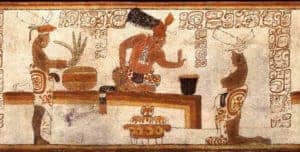
All About Chocolate
Chocolate is harvested from a tree. Picking dangling bars of Lindt, Valrhona or Cadbury is not how it happens, though. Instead, it begins as a large pod (about 1/2 the size and shape of a football) which grows from the side of a tree’s trunk, not the branches as you might assume. Once picked, the pods are split open and the the beans are scooped out. Next they’re fermented, dried, roasted and shelled to extract the interior kernels called nibs.
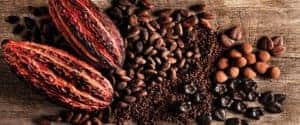
Assorted cocoa nibs are used to produce different flavor profiles in chocolate just as different coffee beans are used for your favorite blend(s) of coffee. Where the chocolate beans are grown, how they’re fermented and augmented “roast” time are all integral to the production of quality and flavor of the chocolate.
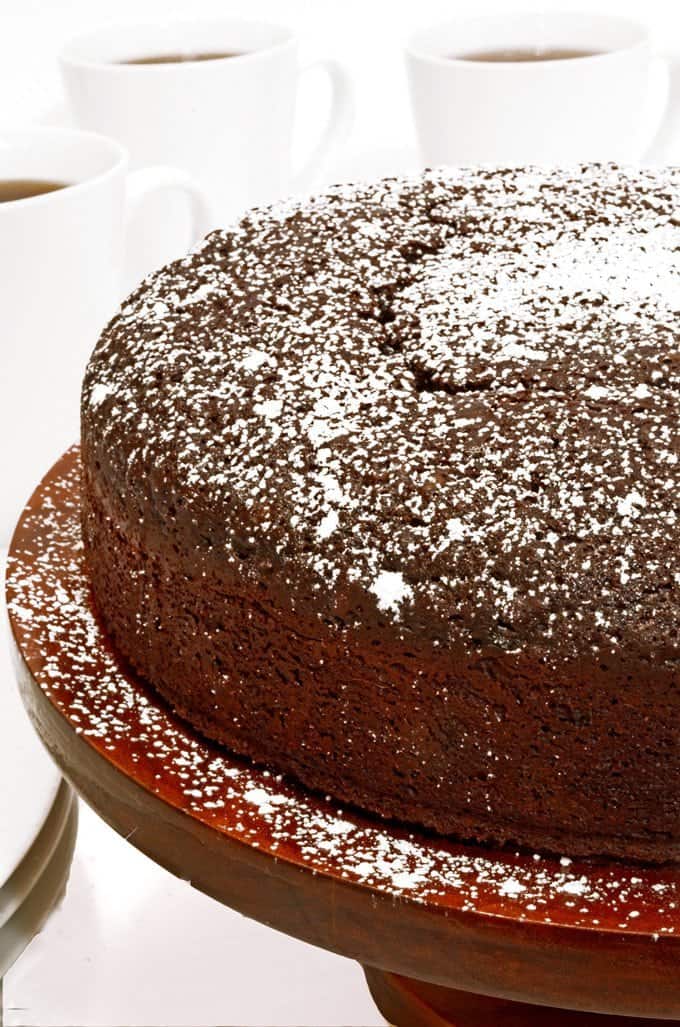
Once the correct proportion of various types of nibs have been joined together to achieve the desired target flavors, they are ground until they form what is known as the chocolate mass or chocolate liquor. This isn’t a type of alcohol (that is liqueur) but what we recognize as unsweetened baking chocolate. This is THE heart of chocolate’s flavor.
All About Chocolate
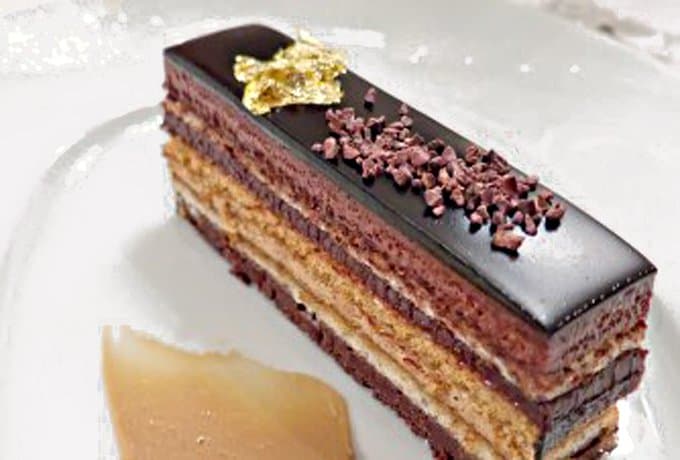
You can find nibs in specialty stores and some spice shops. The first time I came across nibs, I was told that the nibs could satisfy my urge for chocolate without consuming the calories of chocolate. Although I found them interesting, they are closer to chewing on a roasted espresso bean, than to savoring the gourmet taste of Vosges.
Chocolate can be unsweetened, bitter, bittersweet, semisweet or milk chocolate. White chocolate? Technically white chocolate is not a true chocolate because it contains no cocoa mass. It is made from cocoa butter, milk and sugar. I love it anyway.
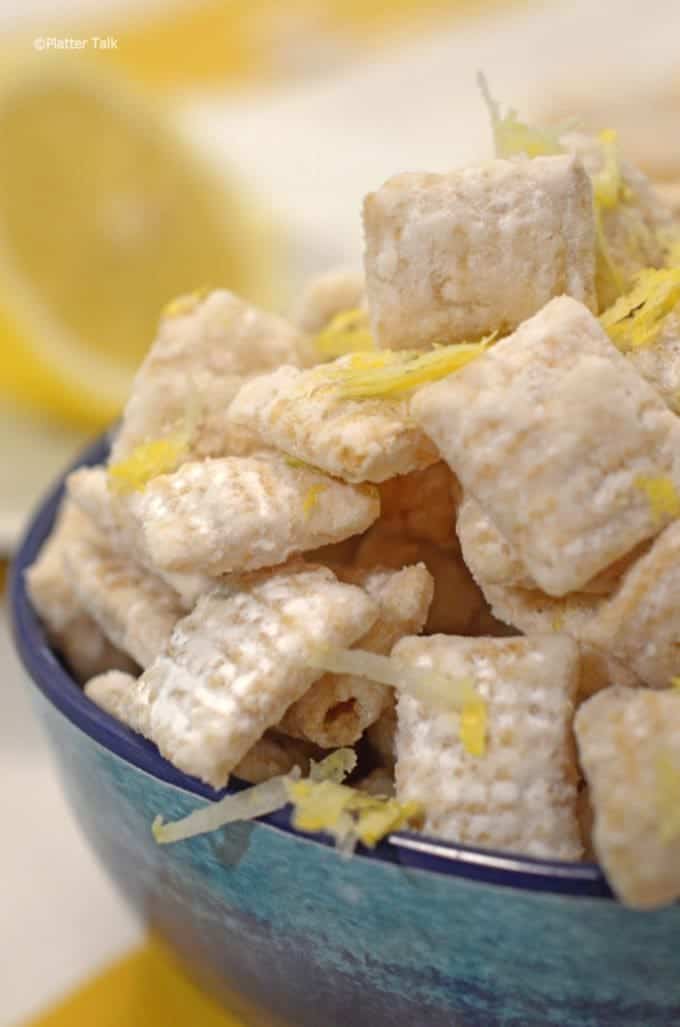
All About Chocolate
Different types of chocolate are a result the amounts of sugar, cocoa butter and flavoring agents (vanilla, cinnamon, chilis, matcha, citrus, etc.) that are added to the mass by rolling and distributing the added ingredients. This results in thin, dry sheets. The sheets then go through the conching process which is done with heated liquid chocolate in vats.
The chocolate sheets are melted by heat and friction caused by interior rotating panels and rollers that scrape down the the liquid chocolate from the vats walls and base. This step, which can take between 6 to 78 hours, eliminates water vapor and any bitterness of the chocolate by agitating and aeration. It’s this step that, before the pouring , that gives chocolate it smoothness and mouthfeel.
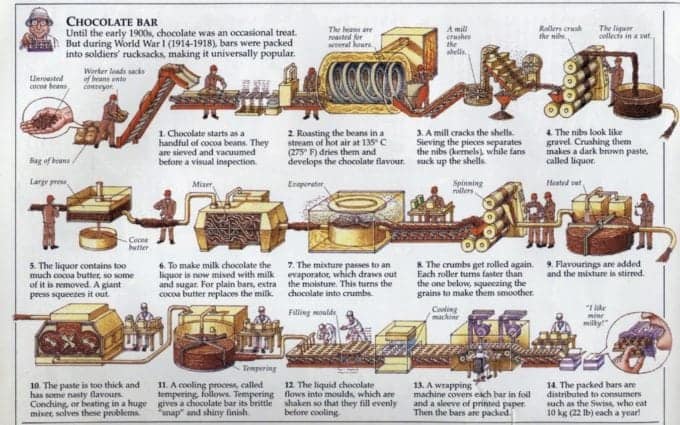
Factors that Determine Quality of Chocolate:
-
Taste and Aroma
- Aroma affects ones perception of taste and your taste is a very personal thing. Again, think about coffee. I have my favorite roasts (Italian or Colombian) and I have my favorite chocolates. Where the pods are grown, how the seeds were roasted and how the chocolate was manufactured are all part of chocolates taste and aroma.
-
Mouthfeel
- This is the texture perceived by your brain to what is inside your mouth. Cocoa butter has a melting point lower then our body temperature. That means good chocolate will not be waxy or grainy but will simply melt on you tongue (think of a quality butter compared to margarine). If the chocolate seems waxy and doesn’t melt in your mouth, it probably has shortening rather then cocoa butter. If the chocolate seems to melt in your mouth but keeps the shape, it’s probably made with vegetable oil. I can think of a brand that is especially prolific during Christmas and Easter. It’s always less expensive, in it’s shiny Santa wrapper or Easter Bunny form. If you carefully look at how the product is labeled and read the ingredients, you’ll see why it’s cheaper.
-
Surface Appearance
- Also called gloss, when properly stored a glossy shine should be noticed. Once the temperature becomes too warm (some can start to melt 65℉) the cocoa butter will begin to rise to the surface. When brought down to proper temperature, the chocolate again sets but you might notice a whitish powdery (bloom) appearance. This isn’t mold, or spoilage but rather simply the cocoa butter that stayed on the surface as fat rises to the top of milk. It doesn’t look all that great, but it’s perfectly edible. As a personal chef, I’ve been in many kitchens that store their chocolate in the first shelf above the counter lights. Not a good idea. I see “bloomed” chocolate all the time. And if the chocolate is a couture or “pass around” type that becomes unsightly, you can always use it in baking. As you should always do in the kitchen, use your imagination.
-
Tensile Strength
- Look for a nice, firm snap when breaking the chocolate off the main bar.
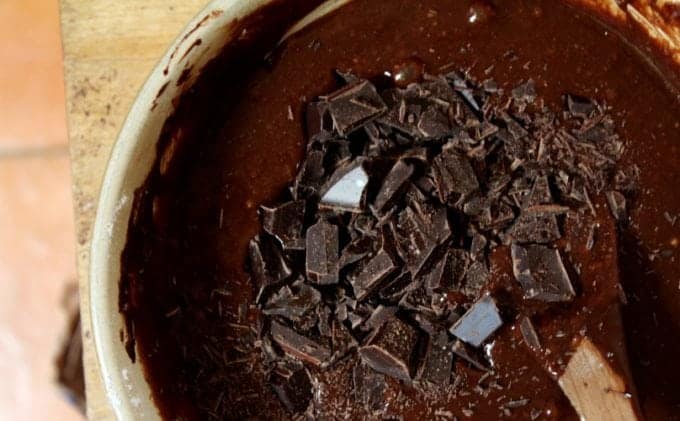
It makes people overjoyed, and puts them in your debt.”
― Judith Olney
Quality of Chocolate
Finally, a note about quality, something that I’m all about. You can go to stores, especially around the holidays, and see large blocks of what appears to be chocolate. If you actually read the label, you might be surprised to find that it’s not chocolate at all but instead labeled as a chocolate impersonator.
Common Chocolate Impersonators
-
Confectioner Coating Chocolate
-
Compound Chocolate Coating
-
Candy Coating
-
Chocolate Flavored Coating
In the same sense that Velveeta isn’t cheese, none of these impersonators are chocolate at all. Instead, they are all chocolate products. In each of these chocolate impersonators, most of the cocoa butter, if not all, is being replaced with vegetable fat which has often been hydrogenated. This is done because it’s much cheaper to produce and makes for easier handling when dipping and molding. It also enhances the shine to a finished product. It’s easy, it works, but it’s not chocolate.
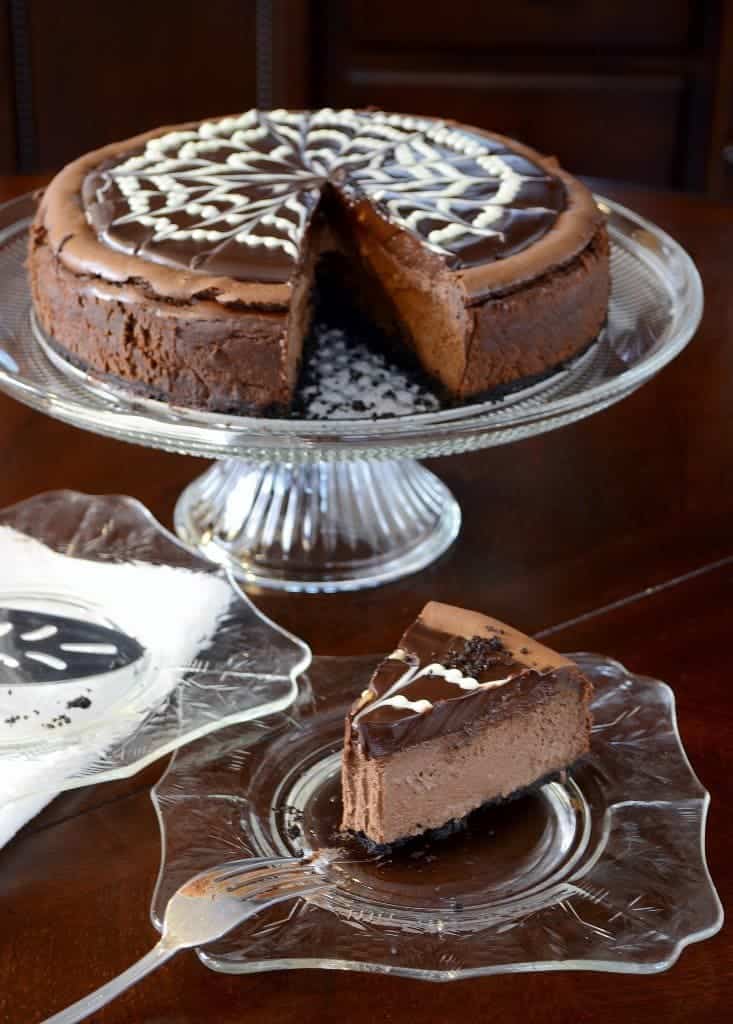
Favorite Chocolate Recipes
- Chocolate on Chocolate Cream Pie
- Keto Chocolate Cake
- Chocolate Chip & Toasted Pecan Bars
- How to Make The Perfect Chocolate Chip Cookies
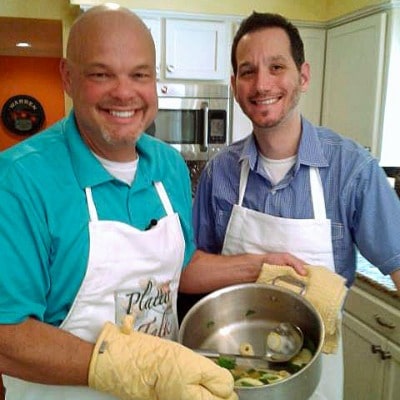











what an informative post. I am lucky to have attended the chocolate show that comes here to NYC annually so have attended lots of seminars and talks on chocolate but good to be reminded of the details
Thank you, Chef! One thing that I miss about living in the tri-state area is being able to go to all the food events constantly going on, not to mention all the eating spots to check out.
What an amazing post! I love chocolate, the dark version and the darker the better for my tastebuds. It’s a phenomenal treat and I loved learning all I never knew!
Thanks Sophia. Just when I think I’m madly in love with one type, another comes along to sweep me off my feet! When it comes to chocolate, I guess that you could say I’m an easy woman.
Like I need even more reasons to love chocolate! I eat a very healthy diet, but include dark chocolate every day– and don’t feel 1 bit guilty about it. It is a superfood! I even let my 1 year old son have it every day, and he thinks pumpkin and spinach smoothies are “ice cream.”
Michelle, it sounds as tho your starting your child out right!
I didn’t know all of the great information you shared about chocolate. It is so fun to know these things about chocolate – I don’t think I will ever look at chocolate the same way!
It does take many steps for the finished product, huh? I’m glad you enjoyed the post.
Oh my gosh, so much information in one place! I just started reading this, but will have to bookmark it to come back and read in detail. Thanks for all this awesome info!
Your most welcome, Debi. It’s really my pleasure to talk chocolate, anytime. I think it’s one thing that almost everyone really loves.
Very informative post. I come from a cocoa country. I miss picking and eating the pods. I loved the process of “dancing the cocoa” (mashed by feet) but that has now been replaced by machines lol. Thanks for this
Thanks, I’m glad that you enjoyed. I was talking to a chef friend who lives in Miami. He said he had 3 trees but they only lived long enough to produce 5 pods. I would love to meet one.
Chocolate is my favorite! And I always choose chocolate instead of any other dessert. Fascinating post!
HI Ilona. I’m glad that you liked my post. Chocolate is my favorite too! Thanks for the comment.
This is fascinating! I (like most probably!) adore chocolate! If I could, I would eat it every day, but I didn’t actually know that much about the history of it. Thanks so much for sharing this! 🙂
Annie, I’m very happy that you enjoyed the information on chocolate. I’ve thinking about having some ever since the post went up yesterday. ; )
Thanks, Florentina. I’m wishing I had some right now. I’m soooo bad but it’s soooo good! lol
Be still my heart! Chocolate is everything and what a fabulous post about it!